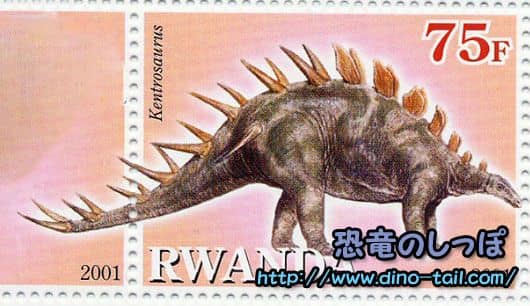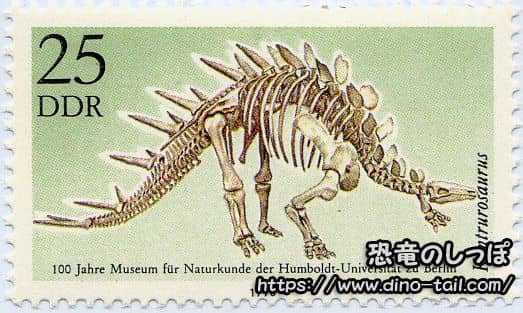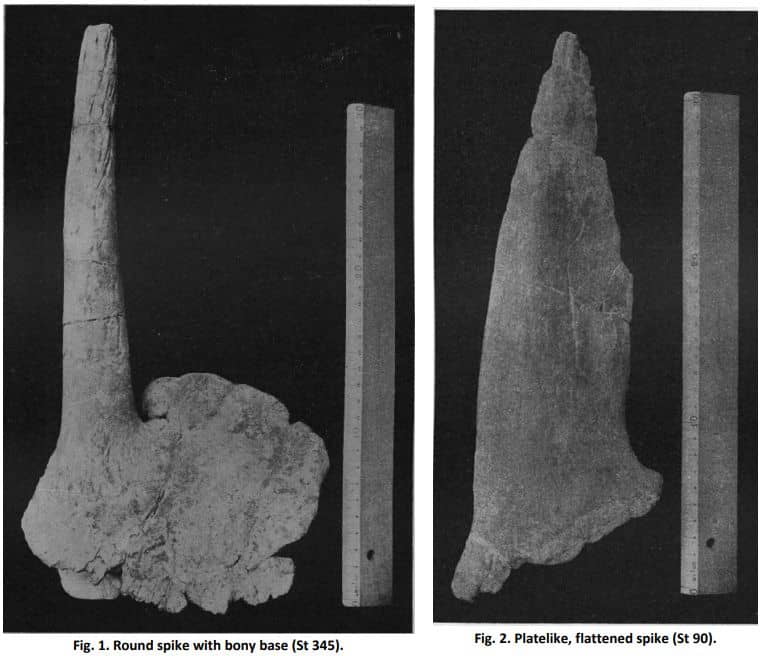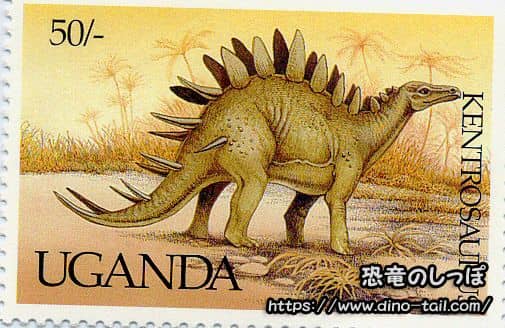About Kentrosaurus
| Scientific Name (Genus) | Kentrosaurus |
| Meaning of Name |
Spiked lizard
kentron (spike) [Greek] - sauros (lizard) [Greek] |
| Classification | Ornithischia, Thyreophora (Stegosauria) |
| Total Length | Approx. 3 - 5m |
| Diet | Herbivorous |
| Period | Late Jurassic |
| Species | Kentrosaurus aethiopicus (type species) |
| Year of Paper Publication | 1915 |
| Genus Name Publication |
Kentrosaurus aethiopicus, der Stegosauride des Tendaguru.
Sitzungsberichte der Gesellschaft naturforschender Freunde zu Berlin. by Edwin Hennig. 1915. |
Features

Kentrosaurus was a stegosaur that lived in Africa and was a close relative of Stegosaurus. On its back, it had relatively small bony plates from its neck to the middle of its back, and sharp spikes from the latter half of its back to its tail. Unlike the plates of Stegosaurus, these were thought to be used mainly for defense or for display to identify members of its own species.
Furthermore, one of the most distinctive features of Kentrosaurus was a pair of long spikes (parascapular spines) that projected sideways from its shoulders . It was once thought that these spikes were on its hips, but it is now accepted that they were on its shoulders, and they must have been a powerful deterrent against predators.
The center of gravity of Kentrosaurus was around its hips, similar to many other dinosaurs, but its very long and muscular tail played an important role in balancing it. The tail, composed of more than 40 vertebrae, was surprisingly flexible and could be swung widely from side to side. It was equipped with sharp spikes (a thagomizer) at the tip, which is thought to have been a powerful defensive weapon against predators like Allosaurus.
Femur Research
In 2011, a paper was published that examined a total of 49 Kentrosaurus femurs, including 12 incomplete specimens.
Except for a few specimens believed to be from juveniles, they could all be divided into "slender" and "robust" types. Because this feature was clearly seen in the femurs of adults, it was suggested that it could be due to "sexual dimorphism (differences between males and females)."

While it is difficult to determine which was male and which was female between the "slender" and "robust" types, the robust femurs must have supported more muscle mass. It is speculated that the males, who would have needed more strength for mating, were the "robust" type.
Pangaea and the Original Paper

Source: Kentrosaurus aethiopicus, der Stegosauride des Tendaguru. Sitzungsberichte der Gesellschaft naturforschender Freunde zu Berlin. by Edwin Hennig. 1915.
In 1909, an expedition from the Berlin Museum of Natural History led by German paleontologist Werner Janensch discovered vertebrae from the back to the tail, a sacrum, and a femur in the Tendaguru Formation in Tanzania, East Africa. In 1910, it was identified as a stegosaur closely related to Stegosaurus, and in 1915, German paleontologist Edwin Hennig, who accompanied the expedition, described the new genus and species Kentrosaurus aethiopicus.
The fact that Stegosaurus, found in North America, and Kentrosaurus, from Africa, are closely related genera suggests that their common ancestor lived on a single continent.
They likely diverged from a common ancestor on the supercontinent of Pangaea and evolved separately on the continents after they split apart.

Many of these fossils were transported to the Humboldt Museum in Berlin (now the Berlin Museum of Natural History), where a beautiful complete skeleton was assembled. Tragically, however, most of the precious holotype specimen was destroyed in an Allied bombing raid on Berlin during World War II in 1943. The skeleton seen in Berlin today is a composite of the remaining parts, replicas, and bones from other individuals.
